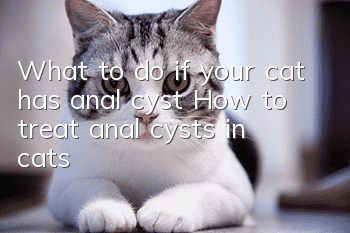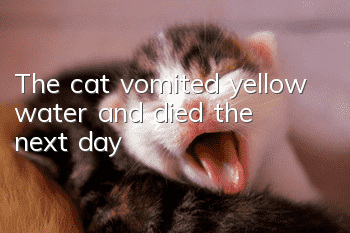What to do if your cat has anal cyst? How to treat anal cysts in cats?

Anal sacs are not obvious in cats, but all cats have them. For most cats, these tiny body parts are usually fine, but some cats may develop problems that cause normal body pain. Because of this, it's important for cat owners to understand what potential diseases the anal sacs may have and what signs they should look for in their cats.
What are cat’s anal sacs?
The anal sacs, also known as anal glands, are two small balloon-like body parts located on either side of the cat's rectal opening. The anal sacs are associated with scent glands and produce a foul-smelling fluid when a skunk poops. They sit just under the surface of the skin at the anal sphincter, with a tiny duct connecting the sac to the rectum. Inside the anal sacs, the smelly fluid can also thicken into a paste. If they don't function properly during bowel movements, the anal sacs can become congested and uncomfortable.
What are the types of anal sac disease in cats?
Although the anal sacs are usually invisible, they can occasionally become problematic and require care. The anal glands can become affected, inflamed, and infected, preventing secretions from flowing out of the anal sacs. If secretions continue to accumulate and cannot be drained, the sac can rupture or rupture, creating a new opening in the skin and sac near the rectal opening. This is of course very painful for your cat. The anal sacs may also develop into masses or tumors. Like infections and impactions, these lumps can prevent secretions from leaving the sac and may also cause problems with bowel movements.
Symptoms of anal cysts in cats:
Cats make noises when defecating
Blood in the stool
Blood stains after sitting or lying down
After sitting or lying down, there is thick secretion on the anal surface
The tail smells bad
An extra hole in the skin near the rectum
The tail drags on the floor
Keeping licking the rectum
Anal sac disease will first cause mild discomfort, with obvious anal gland fluid on the surface and an unpleasant odor. As the problem worsens, the cat may cry in pain while defecating, and blood may be seen in the feces and on surfaces your cat sits or lies on. Excessive licking or even biting at the rectal opening or general posterior area are signs that things are getting very uncomfortable or painful. Before the anal glands eventually rupture, the posterior ends may be seen to be dragged to relieve pressure or pain in the anal sacs. The rupture is very painful, so the cat will often cry out, and an extra hole will be found next to the rectal opening, as well as a large amount of blood and anal sac secretions.
Cat Anal Sac Diseasereason
If your cat's anal sacs are not allowed to express themselves naturally like defecation, bacteria and inflammation will accumulate in the anal sacs, causing problems. A variety of things can block anal gland expression, causing this unhealthy buildup.
Diarrhea: Soft stools and diarrhea do not put enough pressure on your cat's anal sacs, so they are discouraged from acting out during defecation. This can be seen in a variety of diseases, including inflammatory bowel disease (IBD).
Obesity: If your cat is obese, the duct from the anal sacs to the opening of the rectum may become compressed by fatty tissue, preventing secretions during defecation.
Lump/tumor: A lump or tumor can act as a space-occupying lesion that blocks the drainage of the anal sacs. Therefore, the fluid in the anal sacs cannot be released and fluid accumulates in the anal sacs.
Constipation: If a cat has difficulty defecating or is unable to defecate, due to various diseases or other problems, such as megacolon, the anal sacs will not express naturally and problems can easily develop.
Treatment of cat anal sac disease
If the anal sacs are affected, they need to be drained. This can be done by physically squeezing the sac, or by allowing the sac to drain through a surgical incision. Your veterinarian will perform a physical examination of your cat to determine what needs to be done to put your cat into relief. The doctor will prescribe antibiotics, painkillers, and occasionally a special diet to help your cat recover.
How to prevent cat anal sac disease?
The best things you can do to help prevent anal sac disease. Obesity can lead to a variety of problems, including anal sac disease, so by increasing physical activity and reducing calorie intake, you can help your cat stay tidy and hopefully get rid of anal sac problems. In addition to your cat's weight, stool consistency is also important to monitor so that stool regularly expresses the anal sacs. Probiotics, prebiotics, fiber and other ingredients can help keep stools firm, therefore reducing the likelihood that your cat will develop anal bag problems.
- How to train a Persian cat to use cat litter
- What is the average lifespan of a Bombay cat?
- What does it mean when a cat meows repeatedly?
- Can cats eat hairy clams?
- Can cats eat salty fish?
- Do cats need rabies vaccinations?
- Causes, symptoms and treatment of acute renal failure in cats
- How to train a Siamese cat? Teach you how to train a Siamese cat!
- Several things to note after cats are vaccinated
- Tips on feeding pet cats, a must-read for cat lovers!



